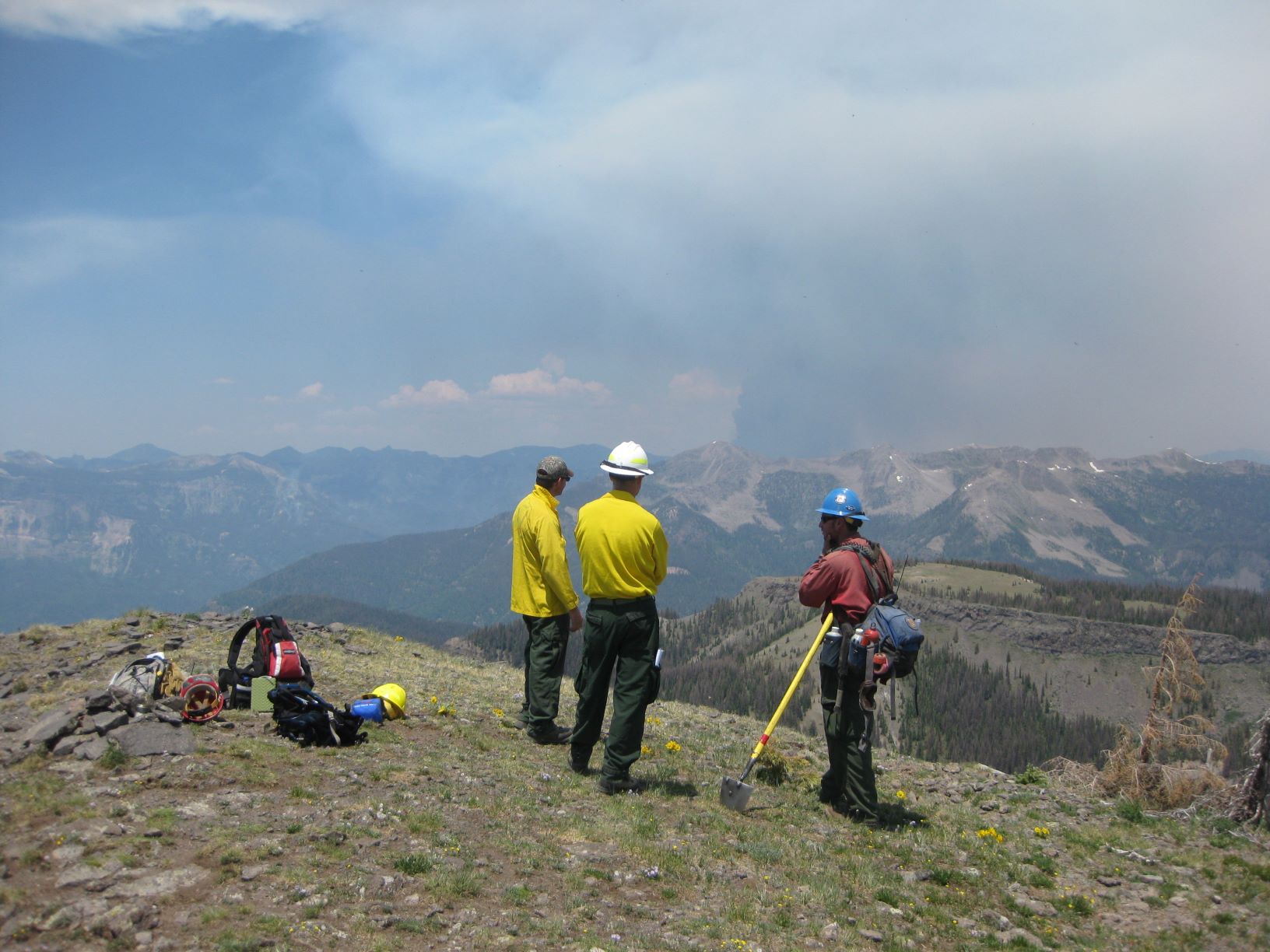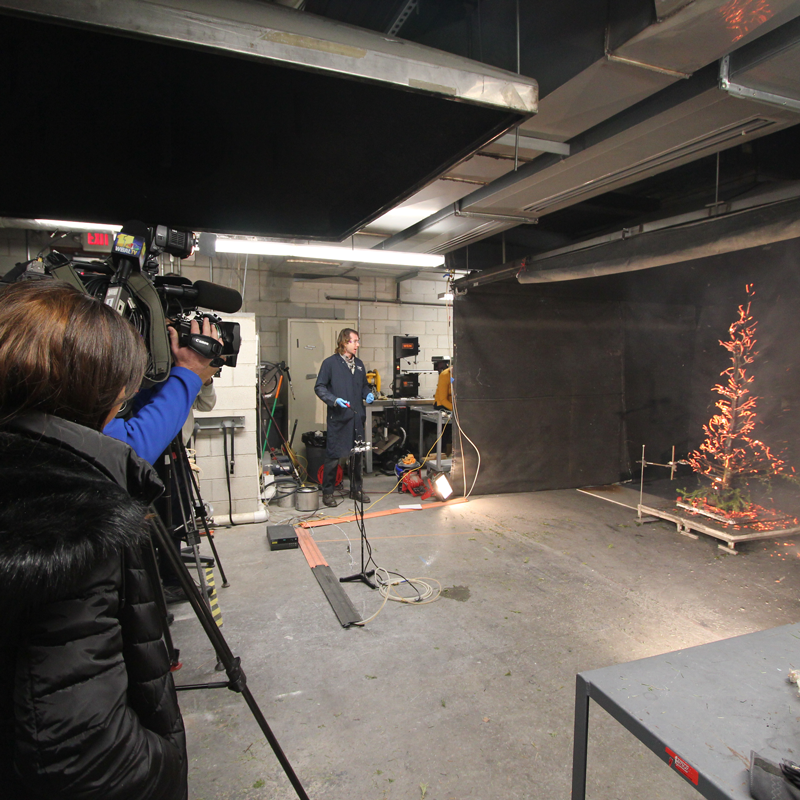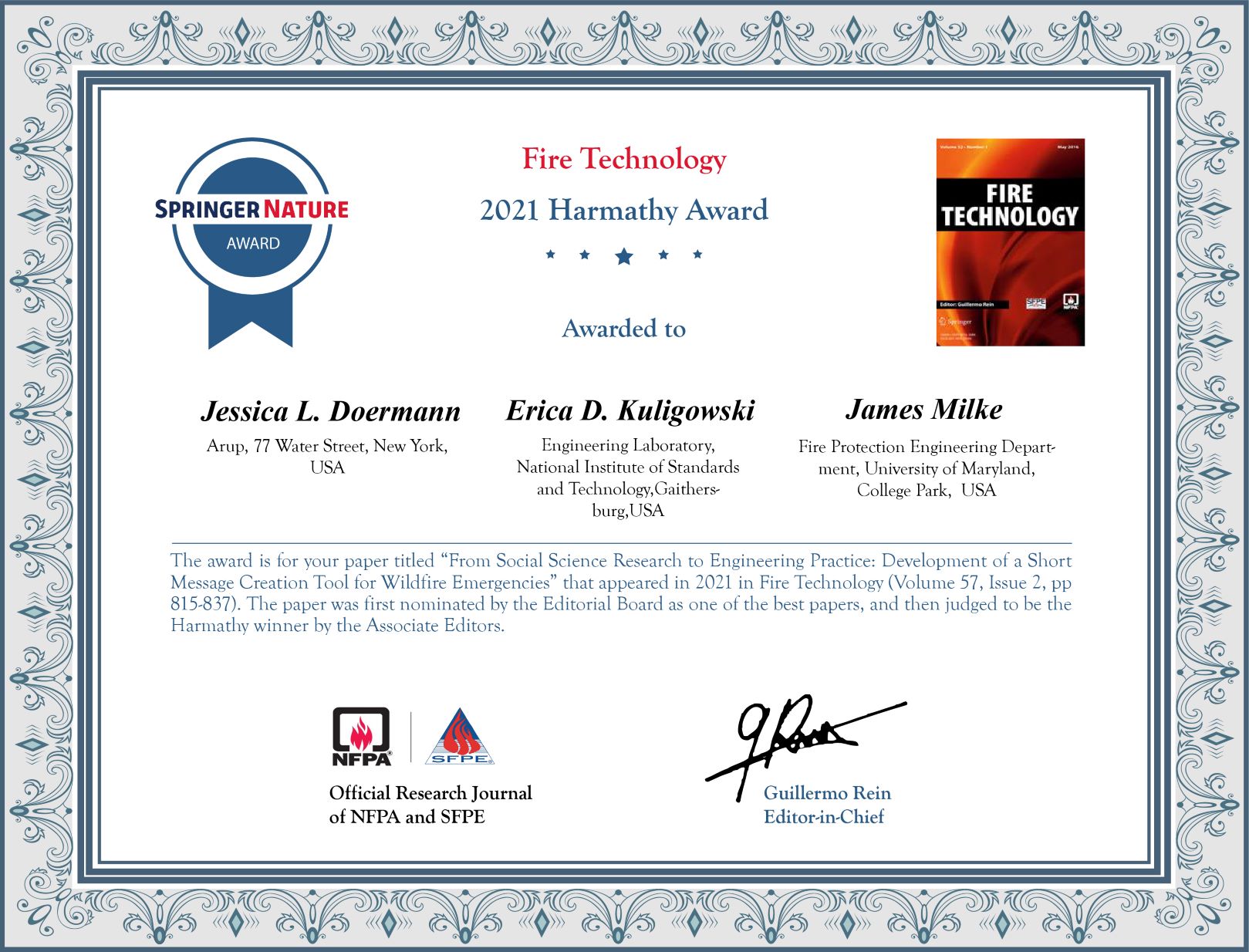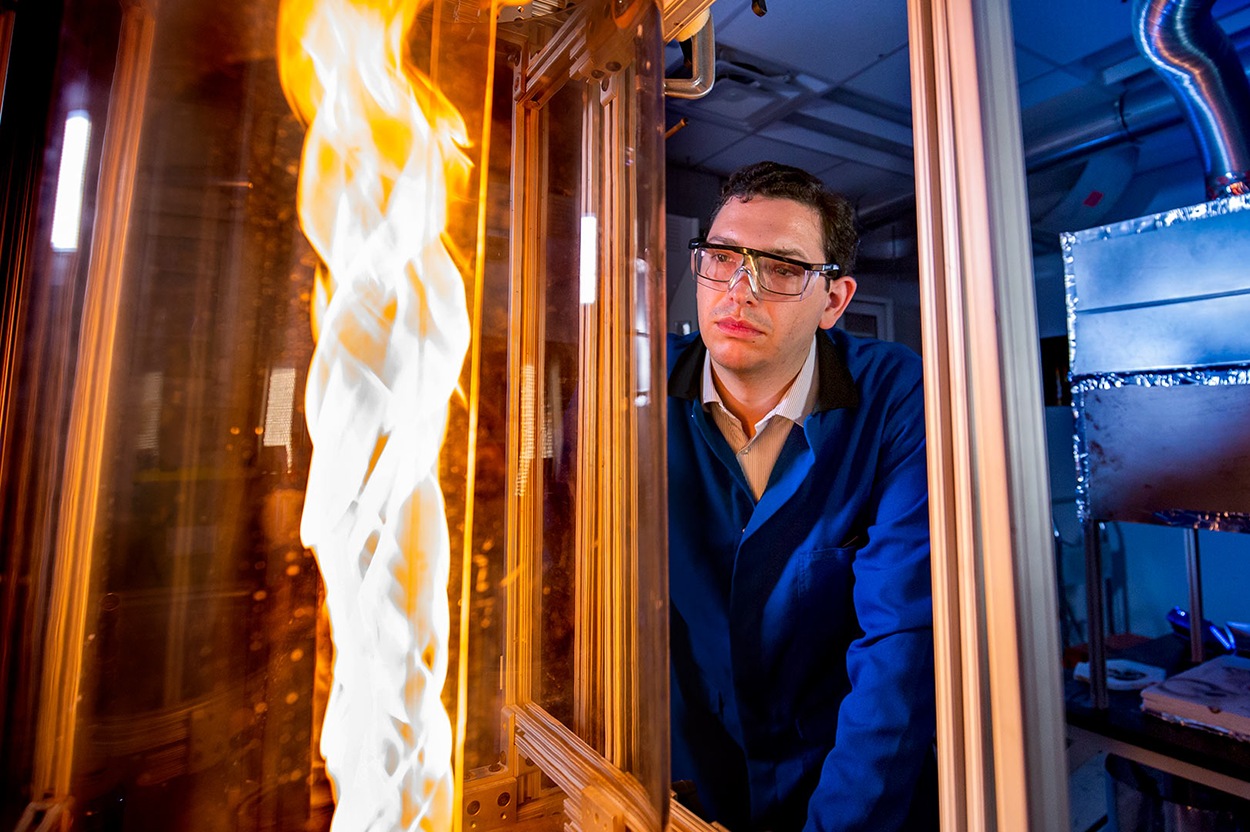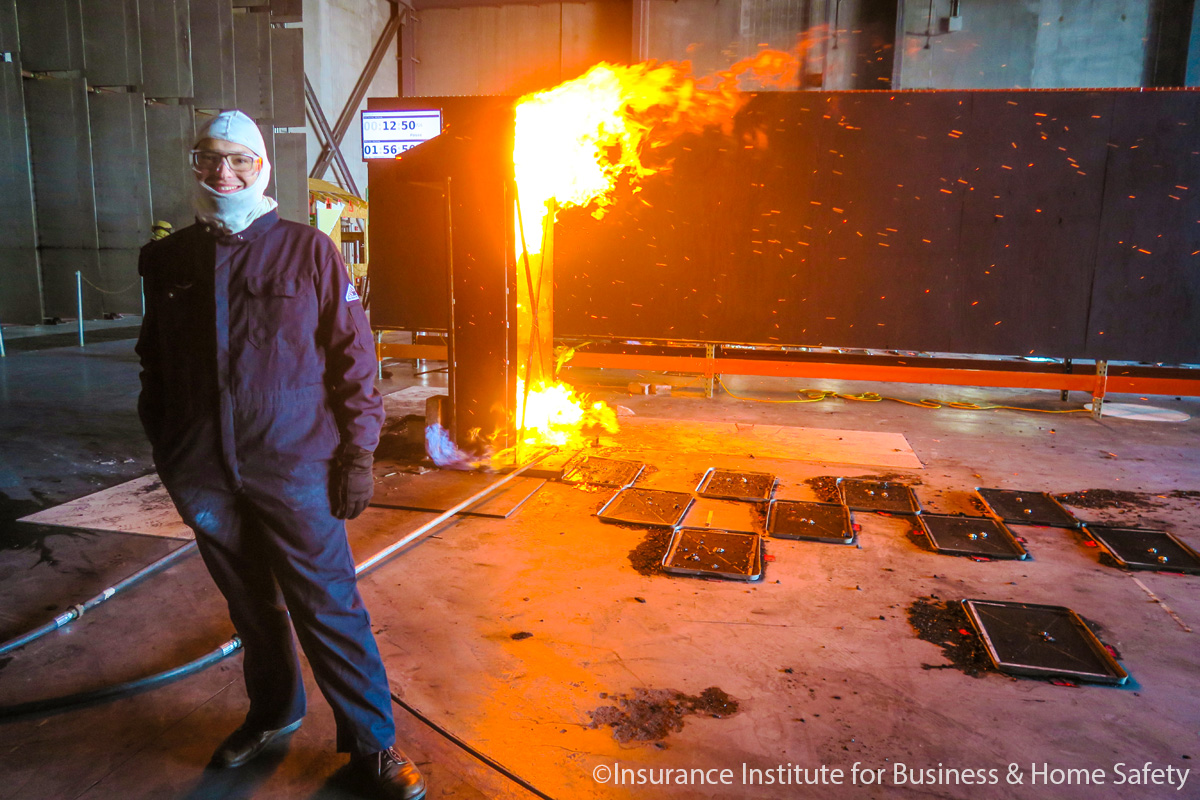News Story
Tracking the Long-Term Cost of Wildfire Emissions
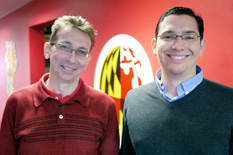
University of Maryland Department of Fire Protection Engineering (FPE) professors Arnaud Trouvé (left) and Michael Gollner (right).
When we see reports of a wildfire on TV, we see the immediate effects and aftermath: trees and meadows burning, homes threatened or destroyed, and people in danger. What we may not think about is what happens long after the fire is out: What happened to the particles and gases generated by the fire that were carried up and away as smoke?
The smoke may clear, but that doesn’t mean the materials it was composed of ceased to exist. Uncontrolled fires are a significant source of carbon and aerosol air pollution, and they are increasing in number. Each year, for every billion gigatonnes of carbon emissions from fossil fuel combustion and cement production, wildfires (and other biomass burning) contribute an additional 100-200 million gigatonnes of carbon to the atmosphere.
Accurate tracking and characterizations of these wildfire emissions will enable us to understand exactly how they contribute to air pollution and affect the absorption or scattering of solar radiation, locally and globally. It’s no easy task, because wildfires are complex phenomena. They are affected by climate change but also influence it. They exhibit complex behaviors simultaneously at multiple scales due to interactions between variables including the vegetation properties, combustion and heat transfer, the terrain, the weather, and the atmosphere.
University of Maryland Department of Fire Protection Engineering (FPE) professors Michael Gollner and Arnaud Trouvé are part of a new team ready to take on the challenge, which requires expertise in fire physics and modeling, satellite observation systems, data assimilation, and geographical and atmospheric science. The pair and their collaborators are among the first to receive the support of a University of Maryland Council on the Environment’s (ConE) Seed Grant for Interdisciplinary Environmental Research.
The team will combine computer-based fire models with air- and spaceborne remote sensing systems using data assimilation, an advanced method of estimation, monitoring and prediction which until recently has not been applied to wildfire research. The project will incorporate the use of FIREFLY, a data assimilation algorithm created by Trouvé with collaborators in France used to reduce uncertainties in estimating fire dynamics. The goal is to develop and demonstrate the feasibility of a new system capable of quantifying the atmospheric pollutants and aerosols produced by wildland fires, at scales ranging from vegetation/flame to regional and global.
The project is expected to strengthen the ties between FPE’s and the Department of Geographical Sciences’ (GS) fire research programs, and to help establish the University of Maryland’s role in the growing field of wildfire research.
Gollner is developing a new course based on the study, Wildland Fires: Science and Applications, which will launch in Fall 2014.
Gollner and Trouvé’s collaborators on the ConE Seed Grant project include Research Assistant Professor Evan Ellicott (GS, College of Behavioral and Social Sciences) and Associate Professor Kayo Ide (Department of Atmospheric and Oceanic Science, College of Computer, Mathematical and Natural Sciences/Institute for Physical Science and Technology).
The ConE Seed Grant program was established to encourage interdisciplinary teams of researchers to collaborate on new research that would otherwise not have been pursued in any single college or school on campus. Teams must include at least three PIs from three different colleges or schools to be eligible to apply.
For More Information:
Research Overview: “Data-Driven Wildfire Modeling”
Rochoux, M.C., Emery, C., Ricci, S., Cuenot, B. and Trouvé, A. (2013) “Towards predictive simulation of wildfire spread at regional scale using ensemble-based data assimilation to correct the fire front position,” Fire Safety Science – Proc. Eleventh International Symposium, International Association for Fire Safety Science, accepted for publication. Abstract
Published March 14, 2014
